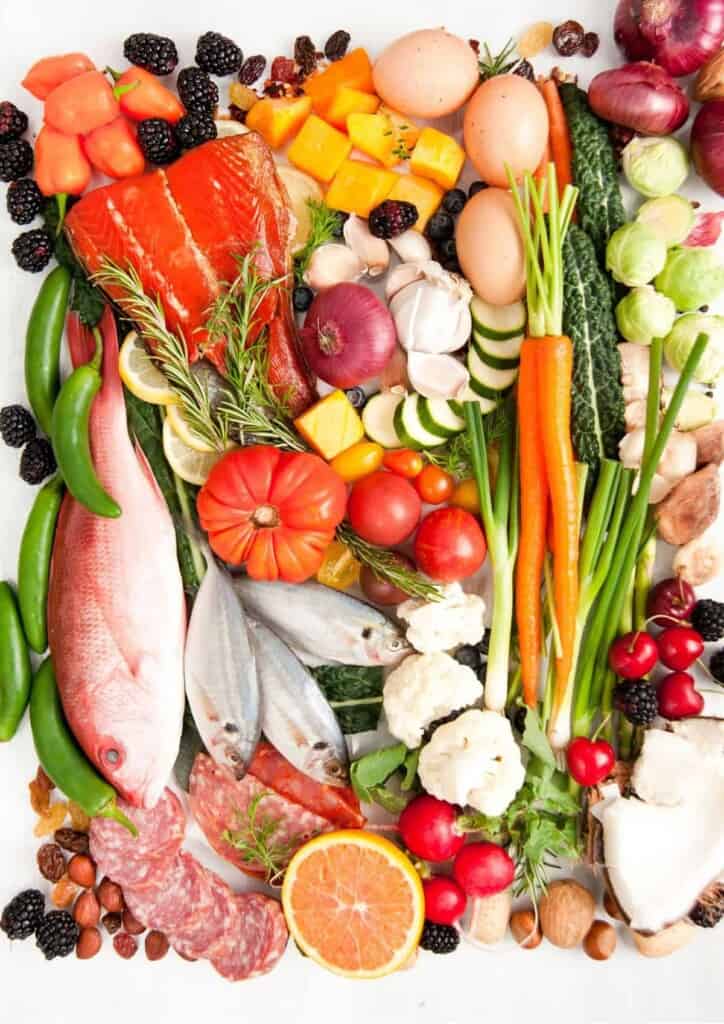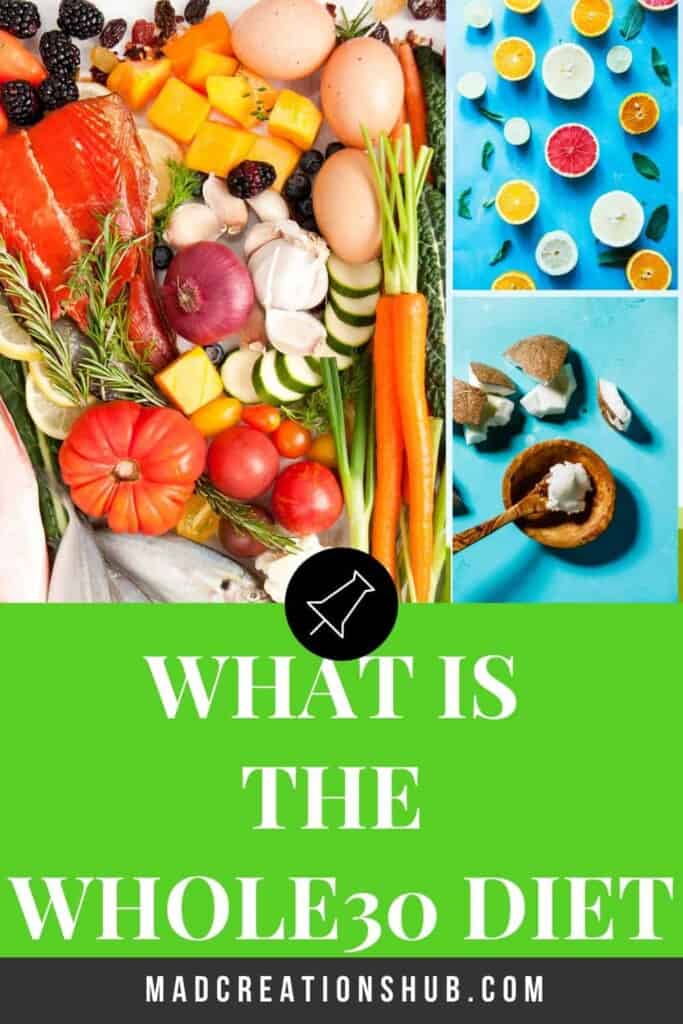
What is the Whole30 diet? I asked myself this when seeing it pop up on my social feed. So I set out to investigate more not long after I started the keto diet.
Everyone needs a fresh start occasionally. And our diets are no exception. You might feel bloated and sluggish after Christmas holidays.
Or maybe you found yourself snacking on chips while lounging on the couch a little too often over winter (guilty!).
Whatever the reason, you feel like it’s a good time for a diet reset.
There are many ways to do this of course, but one popular reset is the Whole30 diet.
And people ask me about it all the time! So, what is it, and how does it differ from keto?
What is the Whole30 diet?

The Whole30 diet is a clean eating plan that focuses on cutting out certain types of food, mainly dairy, grains, sugar, legumes (that includes beans) and alcohol (sob!).
French fries and heavy cream are out, and chicken and Brussel sprouts are in!
But there are a lot of rules and sometimes it’s hard to really get to the bottom of what you can and what you can’t do.

General Rules
The Whole30 diet is essentially an elimination diet.
You do it for only a short time (30 days usually) and the idea is that you see how the different foods you’ve been eating are affecting how you look and feel, and the quality of your life. Print the Whole30 Food List here.
Here are the general rules:
- No counting calories or macros. Or anything else for that matter.
- No weighing yourself. In fact, you have to avoid the scales for the full 30 days.
- No sugar, alcohol, grains, legumes, dairy, soy or processed foods. That includes natural sugars like honey and agave.
- No smoothies (unless absolutely necessary!). While it’s OK to eat all those ingredients separately (as long as they’re approved), they’re not allowed whizzed up.
- No snacking (unless you really, REALLY have to). And then it’s just a handful of nuts, a hard-boiled egg or a piece of jerky.
- No dessert (BIG bummer).
What you can eat on Whole30?
But there’s plenty that you can eat. Here’s what you can:
- Meat. As much as you like. Chicken, beef, burgers (but no bun), sausages… you get the idea. Ethically sourced is best.
- Fish. Fish is definitely Whole30 approved, even tinned tuna and salmon.
- Fruits and veggies. Pumpkin, bananas, berries, apples, broccoli, green beans… as much as you want, as often as you want.
- Eggs. Free range, ethically sourced is best.
- Kombucha. Just make sure sugar isn’t listed on the ingredients list.
- Fresh-pressed fruit and veggie juice.
- Nuts. And that includes nut milk and nut butter.
- Coffee. Coffee is OK, but it needs to be black or taken with non-dairy, sugar-free creamer.

What are the benefits?
Everyone seems to react to the Whole30 diet differently.
Some people report weight loss, better energy levels, improved focus and better sleep.
Though the evidence is mostly anecdotal – coming from testimonials – it does support the idea that the Whole30 diet might help improve these things for some people.
What do you do after the 30 days are over?
After the 30 days are over, you get to the reintroduction stage. Now you start adding back in the foods you cut out.
You do it slowly, one at a time, so you can keep an eye on the way different foods affect how you feel and look, your energy levels, digestion and mood.
This way you know what is best for your specific body.

Whole30 vs Keto
So, what is the difference between Whole30 and keto? And in a Whole30 vs keto battle, which ‘diet’ comes out on top?
Different Focus
The main difference between Whole30 and keto, is that keto diet to put your body into ketosis.
It does this by feeding it lots of healthy fats and very small amounts of carbohydrates. This forces your body to use your own stored fat.
I’ve written much more about what are the benefits of a keto diet, and how it has worked for me.
On the other hand, Whole30 is about your relationship with food.
It’s essentially a month-long nutritional reset that allows you to figure out what foods work with your body, and what doesn’t.
Keto is Doctor Recommended
Keto was originally developed in the 1920s as a clinical strategy to help kids who were suffering from epileptic seizures.
Today doctors recommend a keto diet to combat severe obesity and other health problems.
On the other hand, there’s no science supporting the Whole30 diet.
Why keto is for me!
When I started the keto diet it was because I was given a possible diagnosis (that was later confirmed) of a very high insulin resistance.
While Whole30 does use whole foods, many of them are still high in carbs. That wouldn’t work for me!
But more than that, I chose keto because I was looking for a long term, sustainable solution not a 30-day reset.
Also, I’m not a big fan of the ‘no desserts rule’! I love to bake and create the ‘faux’ foods that the Whole30 does not recommend.
Oh… and I’d miss my weekly gin! 🤣
Overall, Whole30 is too restrictive for me, especially for the long term.
So tell me, have you tried the Whole30 diet? What do you think?
Here are just a few Whole30 recipes you can enjoy
Here are just a few of the Whole30 recipes, that are also low carb, on the website to enjoy!
- Easy Keto Mayonnaise
- Italian Meatball Minestrone Soup
- Keto Pea and Ham Soup
- Chicken Vegetable Soup with Hemp Seeds
- Keto Red Curry Chicken




Leave a Reply